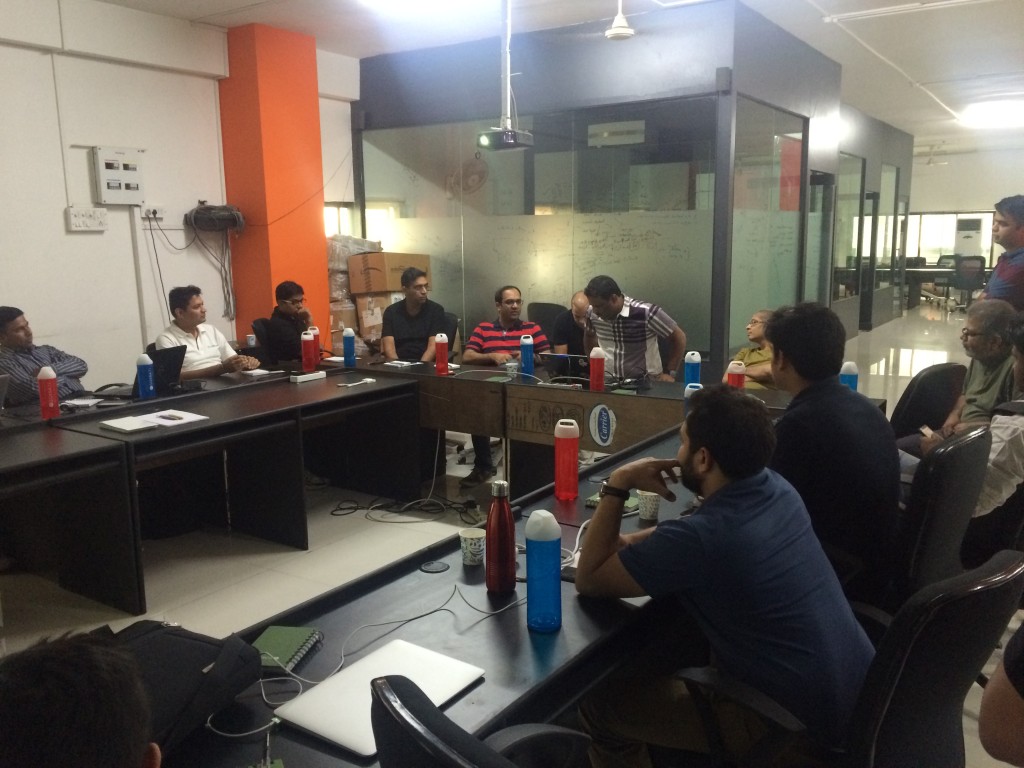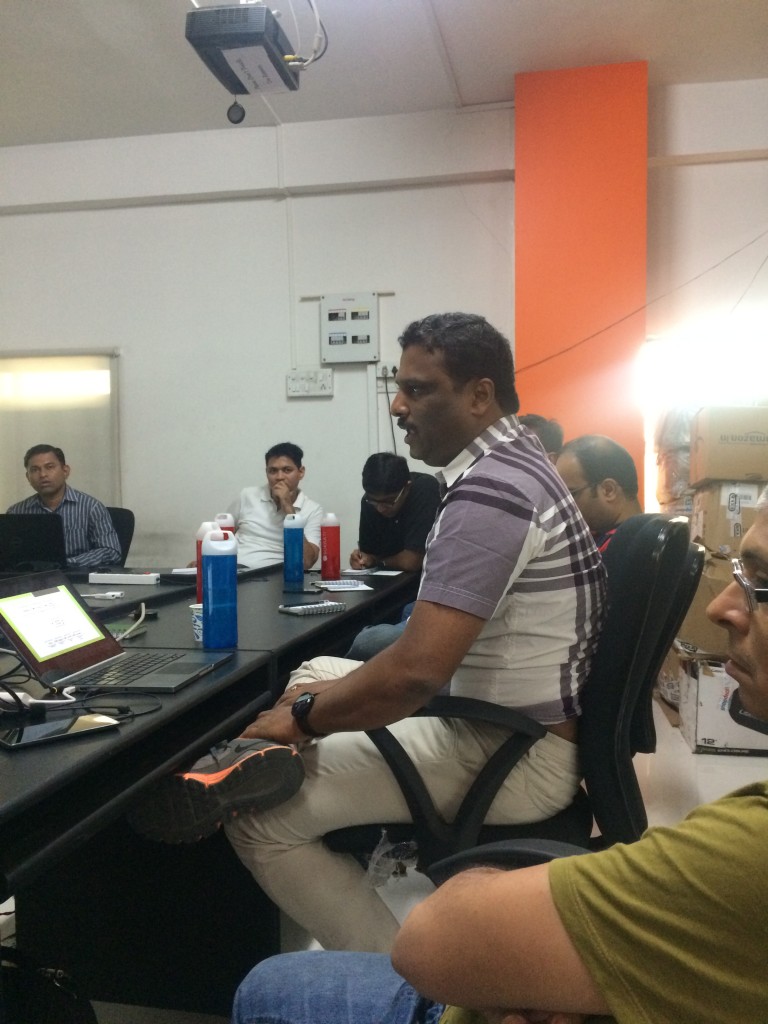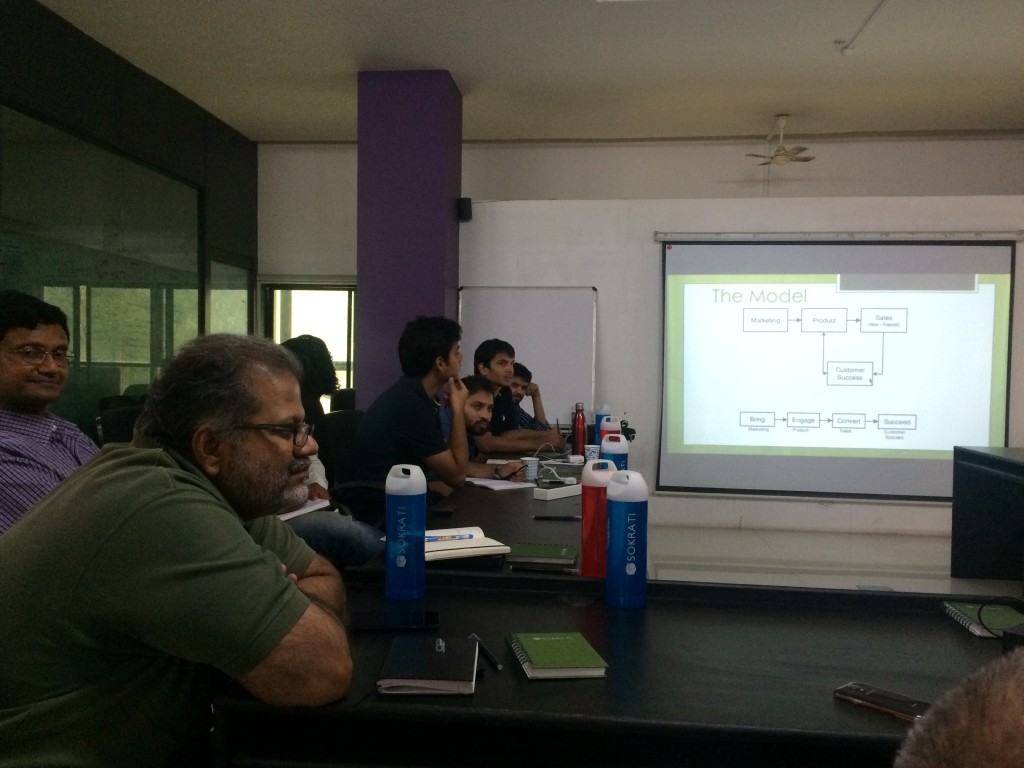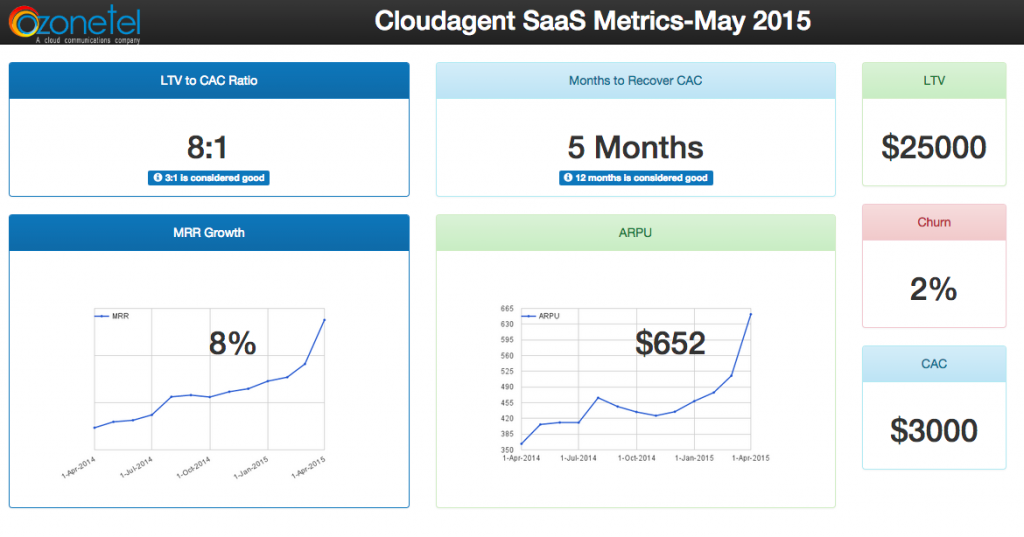I took SaaSy bus to attend SaaSx3, a fun journey networking and ice break session among SaaS founder The sessions were on common challenges from funding to hiring right resources and also instant mini FinTech RoundTable (picture below).
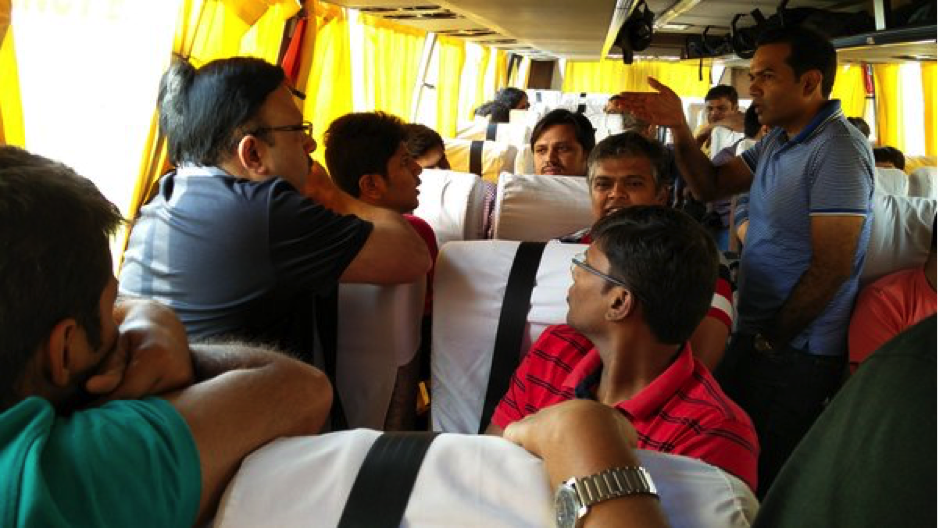 The venue was at Chennai (Mahabalipuram) well described by above tweet and event started with afternoon session by Pallav Nadhani of FusionCharts on Referral Marketing. The discussion started emphasizing needs of marketing starts before existence of the product and continues with product and marketing should not be looked in silos away from the product. One question for SaaS founders is whether their startups are geared to leverage product features to perform self-marketing of the product The session brought some real examples of SaaS firms who have already done this successfully.
The venue was at Chennai (Mahabalipuram) well described by above tweet and event started with afternoon session by Pallav Nadhani of FusionCharts on Referral Marketing. The discussion started emphasizing needs of marketing starts before existence of the product and continues with product and marketing should not be looked in silos away from the product. One question for SaaS founders is whether their startups are geared to leverage product features to perform self-marketing of the product The session brought some real examples of SaaS firms who have already done this successfully.
The impact of using “Powered by Logo” inside your product features on B2B2C websites that are focused on end user was highlighted and is more effective to target customers from new geographies where your product has not been adopted and are in early stages of entering new geography.
Nemesh of appointy stressed importance of backlinks (two lines of codes in the product), that became part of Google search when someone searched for a tool for appointments. Other suggestions include:
- Sell lower price plan without option to “White label” product offering. After product is adopted, the lowest price plan can be offered as “Free forever plan” without white label option.
- Find a WordPress plugin that is active and popular. Buy plugin and add one line in this plugin and publish the plugin.
#OneThing session happened where SaaS founders were asked to share a set of one things that creates significant transformation in their startups.
- We did not predict, we performed action
- Upgrade Field on Sales approach to Customer Success approach
- “Support and train customers for first 45 days increased NPS score” – Think of it as customer Success Channel that is needed in scaling stage.
- Keep high touch with customer and experiment how to maintain high touch with customers being online and not on-site. Leverage and experiment with cloud telephony, gamification and customer management.
Product Tear Down session where SaaS founders offered their product to be teared down by expert SaaS founder and audience. The experience SaaS founders published guideline template based on which they will provide feedback to brave startup like Zipboard and CanvasFlip and here are comments that apply to lot of startups found here too.
- You first need to go deep focusing on the right customer segment before going broad.
- While building a branded website, remember that website home page needs to convey emotional, functional and technical aspirations to connect with your audience. One good example is slack website, it is inspirational.
- While displaying metrics of your product on the website, show metrics that creates positive impression in mind of prospects. Small number may not create right impression.
- Remove small irritants. Devil is in details.
- Does your product features pass Tooth Brush test? Ask, ‘Is this something people use once or twice a day and does it solve a problem?’
- No right or wrong strategies, only shades of right while building startups.
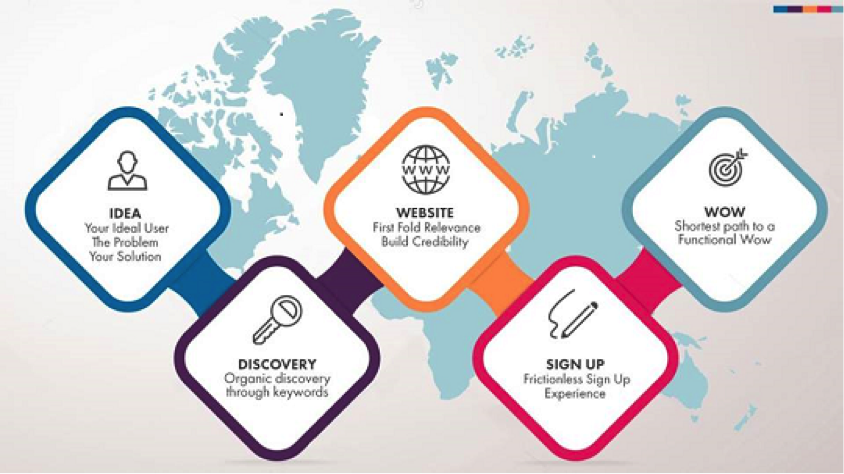 People who teared down choose right words to share comments to the founder who offered his product for tear down, also adding kind words “Do not become defensive. Their inputs are to improve not to criticize”. SaaS founder in the audience really liked the positive impact of product Tear Down session and followed with asks to #ispirit to have more startups in Product Tear Down sessions and suggestion for virtual Product Tear Down session.
People who teared down choose right words to share comments to the founder who offered his product for tear down, also adding kind words “Do not become defensive. Their inputs are to improve not to criticize”. SaaS founder in the audience really liked the positive impact of product Tear Down session and followed with asks to #ispirit to have more startups in Product Tear Down sessions and suggestion for virtual Product Tear Down session.
There was another #OneThing session focused on what is one thing that in last 12 months worked well for SaaS startup with Aditya Sangi of Hotelogix , moderated by Prasanna
- Alliance building approach steps – find complimentary product. Check whether your product adds to their value offering and whether other product have efficient reach to your customer target and whether joint offering creates value for your customer base.
- Do not keep building a lot of non-core features in to your product and make the world as your competition and end up with no partners.
Am I building the product right or am I building the right product, both are different, very important to understand by @skirani #SaaSx3
— Saravana -BizTalk360 (@saravanamv) April 2, 2016
One attraction in SaaSx#n is story style presentation by Girish of #freshdesk, who genuinely shares learnings from his journey. This time the story had movie effect and learnings from the movie are
- Everything need not be data driven. You can do things that people would notice and they will notice when things are on high quality bar.
- Do what is right for customers first. Help sales team to develop focus on customer success by incentivizing to help customers first.
- Started with sales team of young minds fresh from college and they started with focus on number of agents sold rather than revenue of agents sold. Once they were more customer focused and time arrived to scale, a change was implemented in discussion with sales team to change their focus to revenue earned per sales team member.
- The importance of alignment between marketing and sales using instances from freshdesk journey.
- Marketing teams must have targets for sign-ups. Pre-Sales team was useful to prepared customers on the product. He referred to article CREATING A SALES PROCESS FOR YOUR INBOUND LEADS: 150 IS A MAGIC NUMBER
- Hired fresher’s following hack “Hire them for attitude and you can get them skills”. I liked the fact that the hack was implemented in sales and marketing function and not only in engineering.
- Similar to other startups, freshdesk also got junks as prospects. They pruned not only junk and also channels where hunk data originated from. More junk arrival from channel lead to removing channel, leading to arrive at list of channels that worked for them.
Girish once again demonstrated that he was a hardcore Rajnikanth fan in real life too by creating a real movie style experiences bringing young talent who accompanied him at the start of #freshdesk journey in sales and marketing on to the stage. He created right impression that success is attributed to team’s effort rather than individual effort. Consider to be special in the days of “Winner takes it all”
Girish complete the movie with some thought provoking questions “Are SaaS founders aiming high?”, “Do you want to be happy with small year on year growth?”
Post by G. Srini, volunteer for iSPIRT


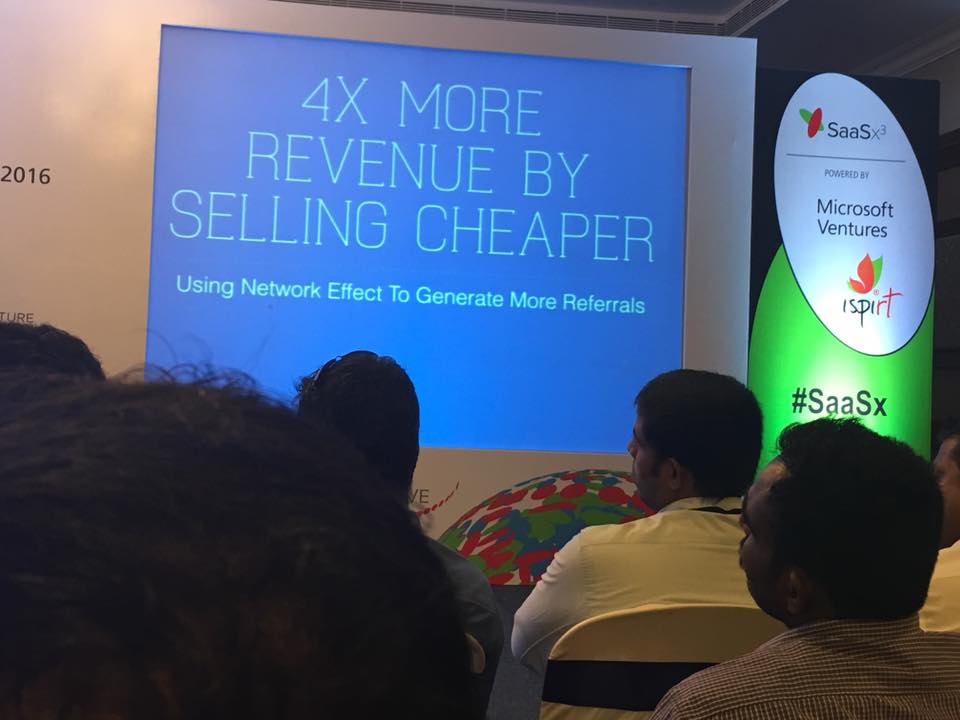 One strategy is using the “powered by *product logo*” inside the product to attract more prospects. This was especially used in a novel way. WebEngage chose a customer (of course, after a due diligence) to sell its low-priced product in an unpresent geography. Then the logo was added in the product to attract more customers in the region. The customer acquisition cost is reduced as a result. Nemesh of Appointy (which helps businesses to schedule appointments) has 118,000 customers, all of them acquired at zero cost of marketing. This was done through backlinks (two lines of codes in the product), which would indirectly show up in the Google search when someone searched for a tool for appointments. Ankit spoke of four strategies to customer acquisition without much marketing spend.
One strategy is using the “powered by *product logo*” inside the product to attract more prospects. This was especially used in a novel way. WebEngage chose a customer (of course, after a due diligence) to sell its low-priced product in an unpresent geography. Then the logo was added in the product to attract more customers in the region. The customer acquisition cost is reduced as a result. Nemesh of Appointy (which helps businesses to schedule appointments) has 118,000 customers, all of them acquired at zero cost of marketing. This was done through backlinks (two lines of codes in the product), which would indirectly show up in the Google search when someone searched for a tool for appointments. Ankit spoke of four strategies to customer acquisition without much marketing spend.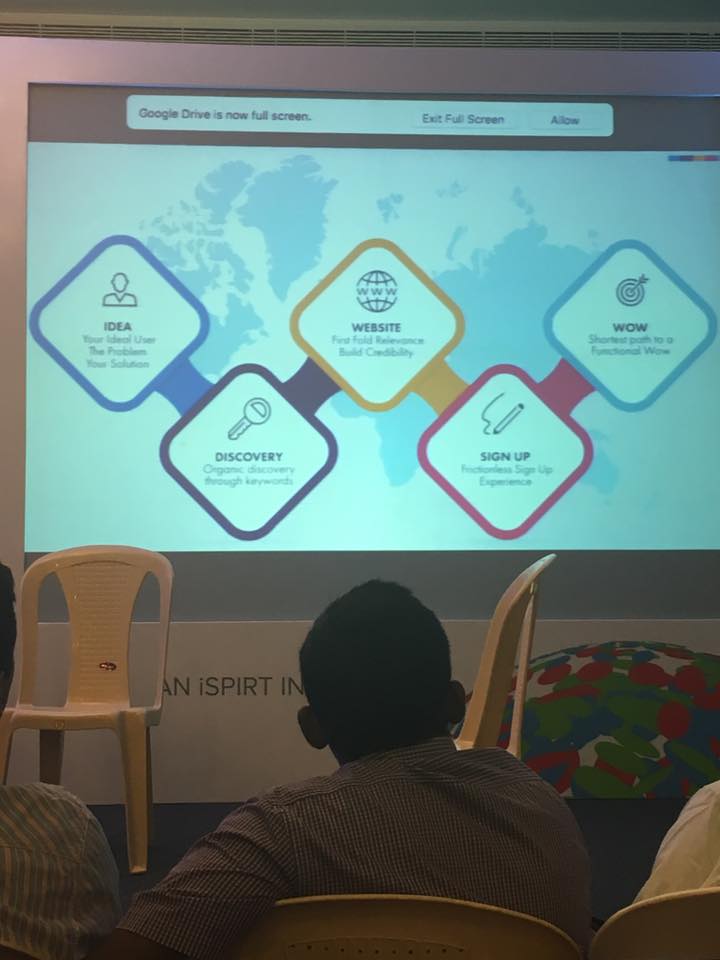
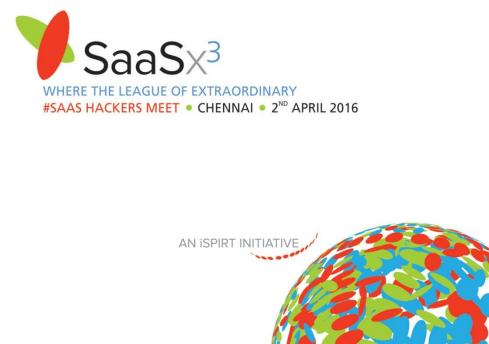






 I have read about startup founders who don’t (or stopped) attend events – justifiably so. In ecosystems where there is now an entire industry of events springing up (i.e. it feels to me that some people’s startup in itself is all about organizing events), it becomes very difficult to separate the wheat from the shaft. Overall, value gets diluted in a bid to make profit. SaaSx2 is in its own class by all standards, hey, not because profit wasn’t the motive, but purely because of the value delivered. I couldn’t have asked for more.
I have read about startup founders who don’t (or stopped) attend events – justifiably so. In ecosystems where there is now an entire industry of events springing up (i.e. it feels to me that some people’s startup in itself is all about organizing events), it becomes very difficult to separate the wheat from the shaft. Overall, value gets diluted in a bid to make profit. SaaSx2 is in its own class by all standards, hey, not because profit wasn’t the motive, but purely because of the value delivered. I couldn’t have asked for more.




 This step is to ensure that you can know exactly what are the top 3 features you need to implement first which will make your product “must have” to solve the problem for your users.
This step is to ensure that you can know exactly what are the top 3 features you need to implement first which will make your product “must have” to solve the problem for your users. Typically in your first pass stick to under 7 screens would be my suggestion. That’s enough for a 45 second to 1 min “demo” and should give your users a feel for what the app will do. If they ask you for “one” feature that matters more to them than the ones you have, dont mock it up yet, but put it on your list until you have enough users interested.
Typically in your first pass stick to under 7 screens would be my suggestion. That’s enough for a 45 second to 1 min “demo” and should give your users a feel for what the app will do. If they ask you for “one” feature that matters more to them than the ones you have, dont mock it up yet, but put it on your list until you have enough users interested.
